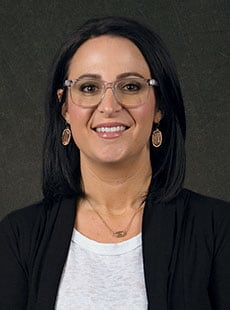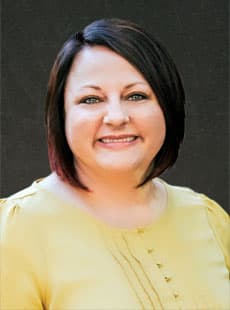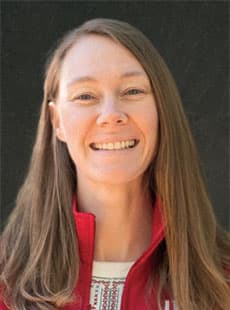Utah Core
•
Curriculum Search
•
All Mathematics - Secondary Lesson Plans
•
USBE Mathematics - Secondary website
Educational Links
Strand: STATISTICS AND PROBABILITY (7.SP)
Use random sampling to draw inferences about a population (Standards 7.SP.1-2). Draw informal comparative inferences about two populations (Standards 7.SP.3-4). Investigate chance processes and develop, use, and evaluate probability models (Standards 7.SP.5-8).Standard 7.SP.1
Understand that statistics can be used to gain information about a population by examining a sample of the population; generalizations about a population from a sample are valid only if the sample is representative of that population. Understand that random sampling is more likely to produce representative samples and support valid inferences.
-
Chapter 7 - Mathematical Foundation (UMSMP)
This is Chapter 7 of the Utah Middle School Math: Grade 7 textbook. It provides a Mathematical Foundation for Expressions and Equations II - Real-world equations, Inequalities. -
Chapter 7 - Student Workbook (UMSMP)
This is Chapter 7 of the Utah Middle School Math: Grade 7 student workbook. It focuses on Probability and Statistics. -
Designing Experiments: Physicians' Health Study
How do scientists and doctors use data to deal with and control disease? This video from Annenberg's Learners Learning Math show how data was used to design an trial dealing with epidemiology. Students then apply their new understanding to take part in an experiment and design a trial of their own. NOTE: You have to create a Free PBS Account to view this web page, but it is easy to do and worth the effort. -
Election Poll, Variation 1
This task introduces the fundamental statistical ideas of using data summaries (statistics) from random samples to draw inferences (reasoned conclusions) about population characteristics (parameters). -
Estimating: Counting Trees
This lesson unit is intended to help educators assess how well students are able to solve simple problems involving ratio and direct proportion, choose an appropriate sampling method, and collect discrete data and record them using a frequency table. -
Estimation from Random Sampling
By taking random samples of the number of penguins in a sub-region in this interactive students understand how those samples can be used to estimate the total penguin population in the region. NOTE: You have to create a Free PBS Account to view this web page, but it is easy to do and worth the effort. -
Events and Outcomes (Counting) video
This video introduces and explains the topic. -
Gathering Data for a Line Plot
Two interactives are used in this lesson and both involve counting raisins in boxes and then plotting a graph. Students extend their understanding of mean, median, mode, and range after creating line plots in the classroom activity. NOTE: You have to create a Free PBS Account to view this web page, but it is easy to do and worth the effort. -
Grade 7 Math Module 5: Statistics and Probability (EngageNY)
In this module, students begin their study of probability, learning how to interpret probabilities and how to compute probabilities in simple settings. They also learn how to estimate probabilities empirically. Probability provides a foundation for the inferential reasoning developed in the second half of this module. Additionally, students build on their knowledge of data distributions that they studied in Grade 6, compare data distributions of two or more populations, and are introduced to the idea of drawing informal inferences based on data from random samples. -
Grade 7 Unit 5: Inferences (Georgia Standards)
The units in this instructional framework emphasize key standards that assist students in developing a deeper understanding of numbers. They have learned to recognize and express different representations of rational numbers. Now they will learn how to apply the statistical aspect of mathematics to the measures of center, variability and population. The Big Ideas that are expressed in this unit are integrated with such routine topics as estimation, mental and basic computation. All of these concepts need to be reviewed throughout the year. -
Making Random Samples
Students learn about population samples in this interactive by comparing various circles. They are then given a statistical population and have to decide what would make a random sample in the classroom activity. NOTE: You have to create a Free PBS Account to view this web page, but it is easy to do and worth the effort. -
Mr. Briggs's Class Likes Math
In a poll of Mr. Briggs's math class, 67% of the students say that math is their favorite academic subject. The editor of the school paper is in the class, and he wants to write an article for the paper saying that math is the most popular subject at the school. Explain why this is not a valid conclusion and suggest a way to gather better data to determine what subject is most popular. -
Random Sampling and Estimation: Lake Victoria
An Annenberg Learner's Learning Math video shows students a real-life application of random sampling by scientists studying fish in Lake Victoria. Students then apply their understanding by designing their own study using random sampling to make predictions and draw conclusions. NOTE: You have to create a Free PBS Account to view this web page, but it is easy to do and worth the effort. -
Random Sampling: How Many Fish?
Goldfish crackers stand in for real fish as this video demonstrates the use of random sampling by scientists to make predictions and inferences about wildlife populations. The classroom activity has students make calculations related to the capture-recapture process used by scientists. They also explore other research methods using random sampling. -
Responses to a Court Verdict: Analyzing Samples to Gain Understanding
The infographic basis of this activity pulls the Trayvon Martin case out of the headlines to examine the data collected from a poll about the case. The students need to analyze the responses to conclude whether the results fall along racial lines. NOTE: You have to create a Free PBS Account to view this web page, but it is easy to do and worth the effort. -
Scatter Plot
An understanding of how a scatter plot works is the focus of this interactive. Students interpret a scatter plot representing the relationship of height to arm length. They then create their own plot by measuring foot and forearm lengths. NOTE: You have to create a Free PBS Account to view this web page, but it is easy to do and worth the effort. -
Statistics and Probability (7.SP) - 7th Grade Core Guide
The Utah State Board of Education (USBE) and educators around the state of Utah developed these guides for Mathematics Grade 7 - Statistics and Probability. -
Storage Shed - student task
Students are going to build storage sheds as a fund raising project, but before they can start they must determine the best dimensions for the shed, make scale drawings and decide on how much to charge for each shed. -
Student Task: Candy Bars
In this task, students analyze a survey to decide how many candy bars students typically eat in a week. -
Variation About the Mean: The Boston Harbor Project
The use and statistical analysis of data in the efforts to improve the water quality in Boston Harbor is the subject of this video. Students then apply an understanding of mean absolute deviation to examine data. They also use data about bacteria found in a river in an analysis of what that data set tells. NOTE: You have to create a Free PBS Account to view this web page, but it is easy to do and worth the effort.


 UTAH EDUCATION NETWORK
UTAH EDUCATION NETWORK

 Justin
Justin Braxton
Braxton Dani
Dani Kayla
Kayla Katie
Katie Matthew
Matthew Rob
Rob Val
Val
